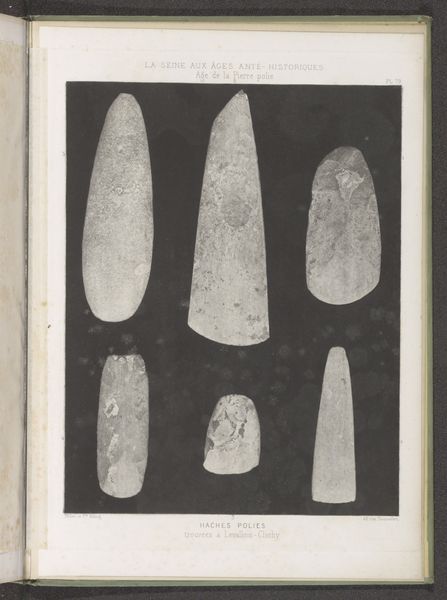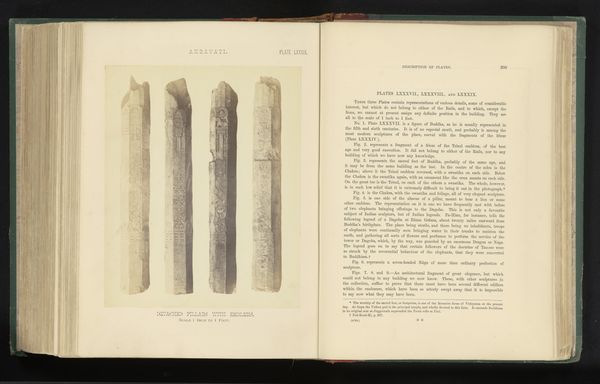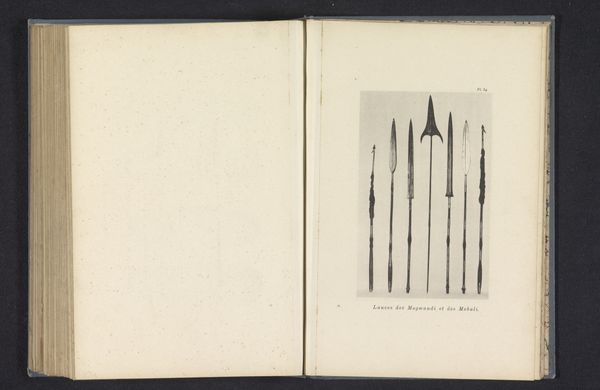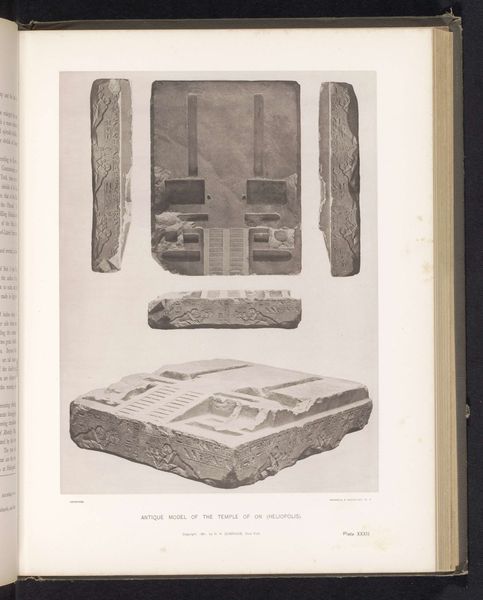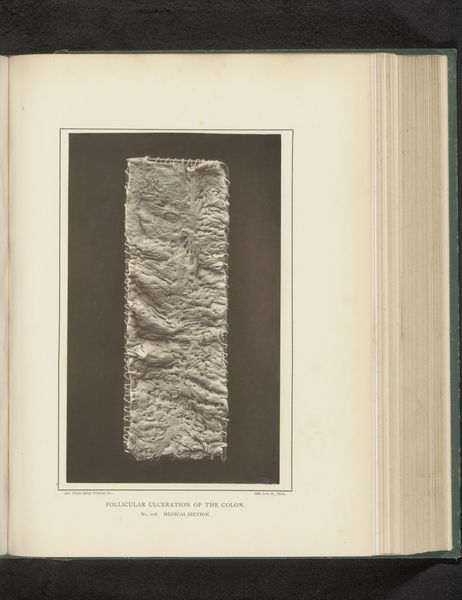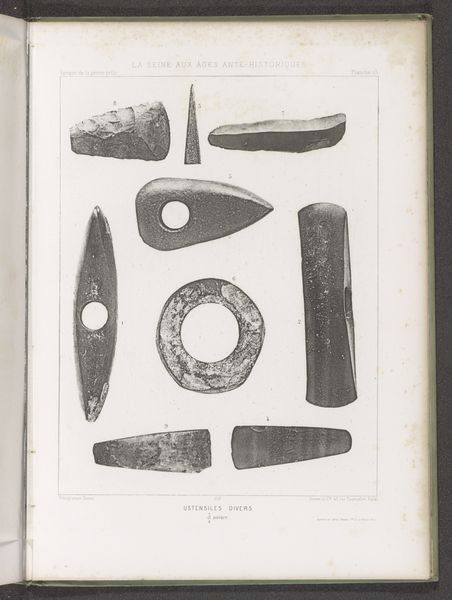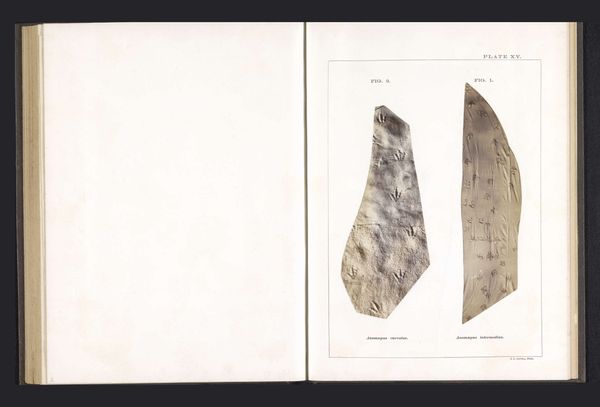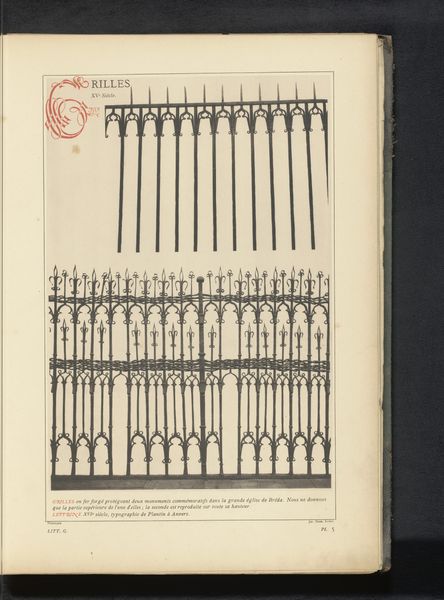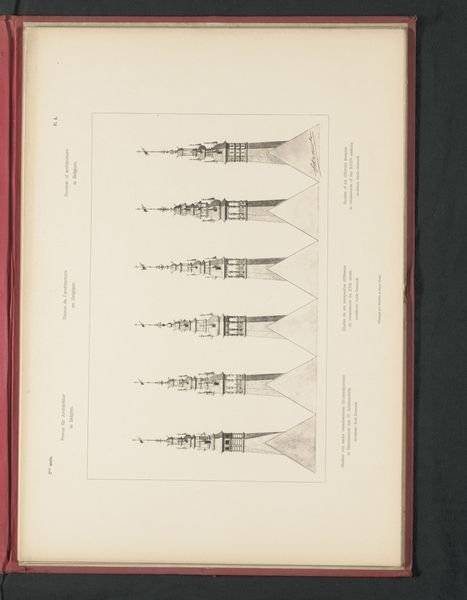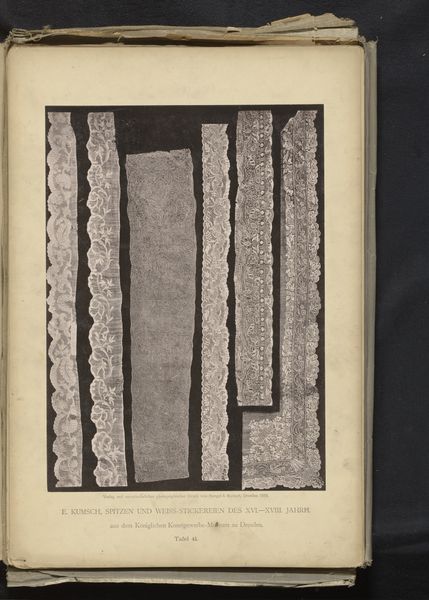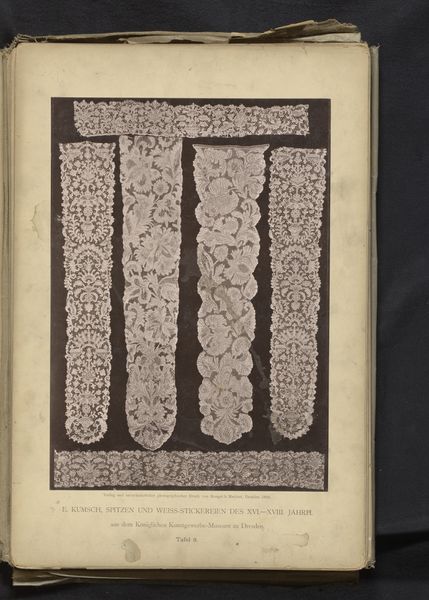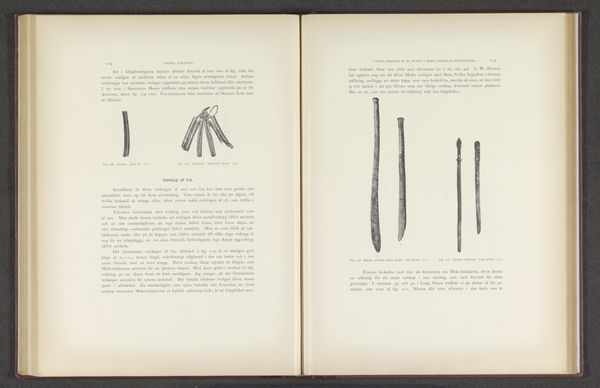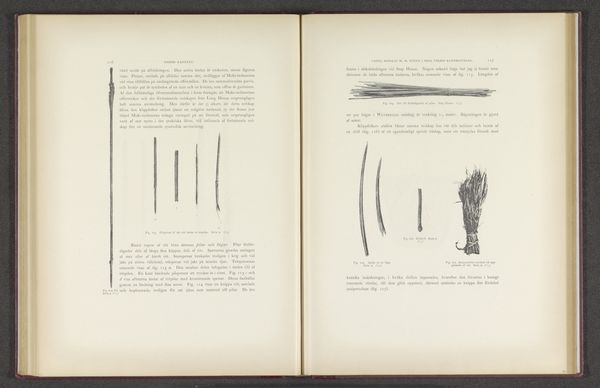
drawing
#
drawing
#
type repetition
#
script typography
#
old engraving style
#
hand drawn type
#
ancient-egyptian-art
#
form
#
hand-drawn typeface
#
geometric
#
ancient-mediterranean
#
stylized text
#
thick font
#
white font
#
history-painting
#
delicate typography
#
historical font
Dimensions: height 280 mm, width 349 mm
Copyright: Rijks Museum: Open Domain
Editor: So, here we have a drawing from 1881 called "The Four Sides of the Obelisk". It depicts, unsurprisingly, the four faces of an obelisk. It looks like the artist used very precise lines, almost like an engraving. What stands out to you about this particular representation? Curator: I am struck by how this image isolates and displays each face. By showing the obelisk in this way, as a series of flat surfaces, it foregrounds the labour involved in its creation and subsequent reproduction as an image. Consider the physical effort of quarrying, carving, and erecting the obelisk itself, and then the meticulous process of drawing and printing these inscriptions. Editor: That's interesting; I hadn’t considered the labour aspect so directly. How does that perspective change our understanding? Curator: Well, think about the role of the obelisk itself. It wasn't simply a decorative object. It was a symbol of power, often linked to the pharaoh's ability to mobilize resources and control labour. This drawing then becomes part of a chain of production, moving from the physical object to its representation. Is it art, documentation, or something else entirely? What do you make of the almost scientific approach of depicting each side in a nearly identical fashion? Editor: It feels very methodical, less about aesthetics and more about documenting the object. Maybe the goal was to make these symbols legible and more accessible, stripping them of their original context to understand the materiality. Curator: Precisely! It’s about making legible what was perhaps intentionally obfuscated by power. By rendering each side, the artist perhaps aimed to demystify the obelisk and underscore the human labour invested in it, inviting the viewer to analyze not just the artistry but also the mechanics of production. Editor: I'm seeing now how focusing on the materiality and means of production can really deepen our understanding. Thanks for pointing that out. Curator: Indeed. It shows how artworks are also historical documents shaped by social, economic, and technical factors. Thinking critically about these things offers rich insights.
Comments
No comments
Be the first to comment and join the conversation on the ultimate creative platform.
